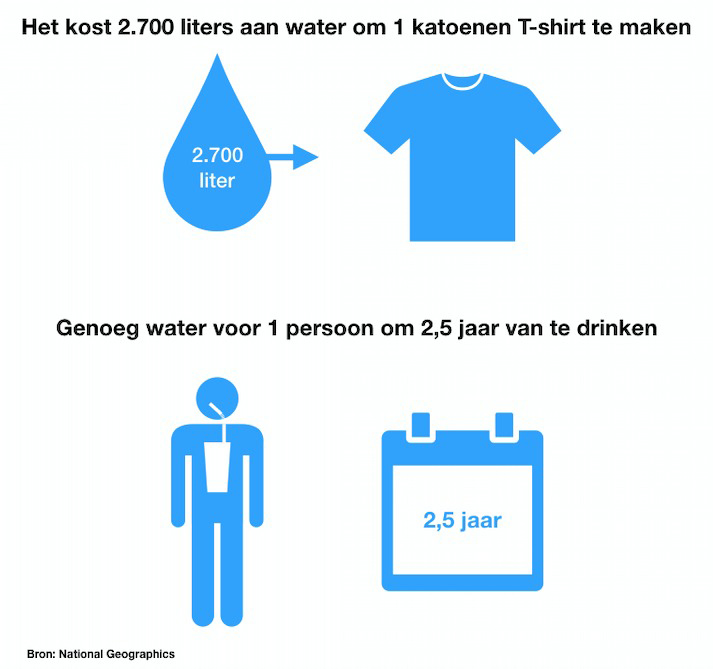You may have heard this statement from fashion magnate Eileen Fisher: “The fashion industry is the second must polluting industry in the world, just behind the oil industry”. A clear but terrifying statement. You may already know that the clothing industry is polluting, but the second most polluting industry is one step further. According to the New York Times, this statement is not entirely correct, but how polluting is the clothing industry?
CO2 emissions in the fashion industry
The UNEP reported that the fashion industry is responsible for 10% of the total global CO2 emissions. In addition, the fashion industry is growing exponentially, partly because the consumption of residents of emerging countries is growing and the production costs of clothing are falling. If this rate continues, the fashion industry’s greenhouse gas emissions will increase by more than 50% by 2030 (Ellen MacArthur Foundation, 2017). The main reason for this high percentage of CO2 emissions isn’t even distribution, but the dyeing and finishing of the fabrics. The energy consumption of these dyeing processes is so high, because large quantities of water have to be heated. In addition to these processes, every second a garbage truck full of textiles is being thrown away and burnt, which is also a major contributor to the high amount of CO2 emissions.

Water consumption in the textile industry
Furthermore, UNEP reported that the fashion industry produces 20% of the world’s wastewater. This puts the textile industry at the second place of the world’s largest water consumption. Here too, dyeing textiles is the biggest culprit. The polluted residual water is dumped in local rivers, streams or ditches. Yearly a quantity of 2 million pools of water is used for dyeing textiles. In addition, the cotton plant, the most important raw material for textiles, needs a lot of water. The production of a simple cotton T-shirt uses about 2700 liters of water and a ordinary jeans up to 7500 liters!

Ocean pollution from clothing
By washing clothes, about 500,000 tons of microfibers come free. This is approximately equal to 50 billion plastic bottles. Microfibers are small particles of plastic that are not biodegradable. By far the the biggest culprit of this is the fabric polyester. This plastic substance can be found in about 60% of all clothing and is responsible for 2-3 times more CO2 emissions than cotton. The International Union for Conservation of Nature (IUCN) reports that 35% of all microplastics in the ocean come from washing synthetic fabrics such as polyester.
Together we can bring those figures down. Are you willing to make the switch to sustainable clothing today?
On stricters.com you will find fair and sustainable clothing of the highest quality. Our clothing is made of organic and recycled fabrics.
